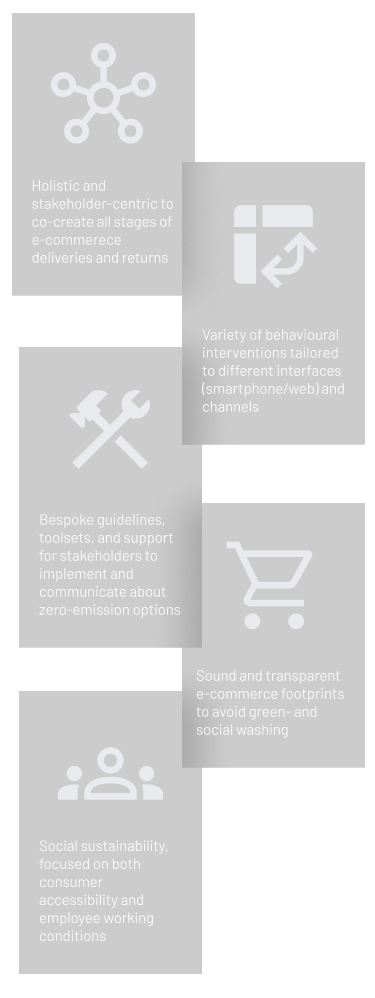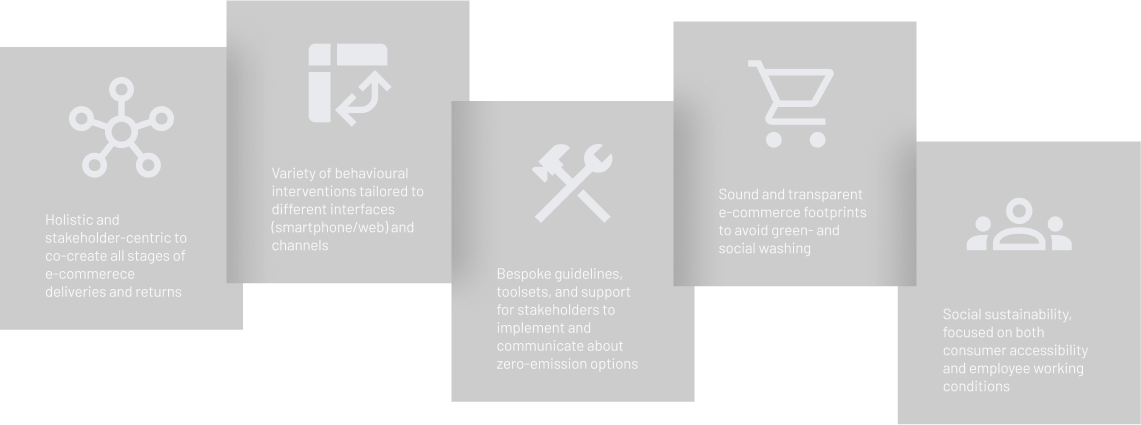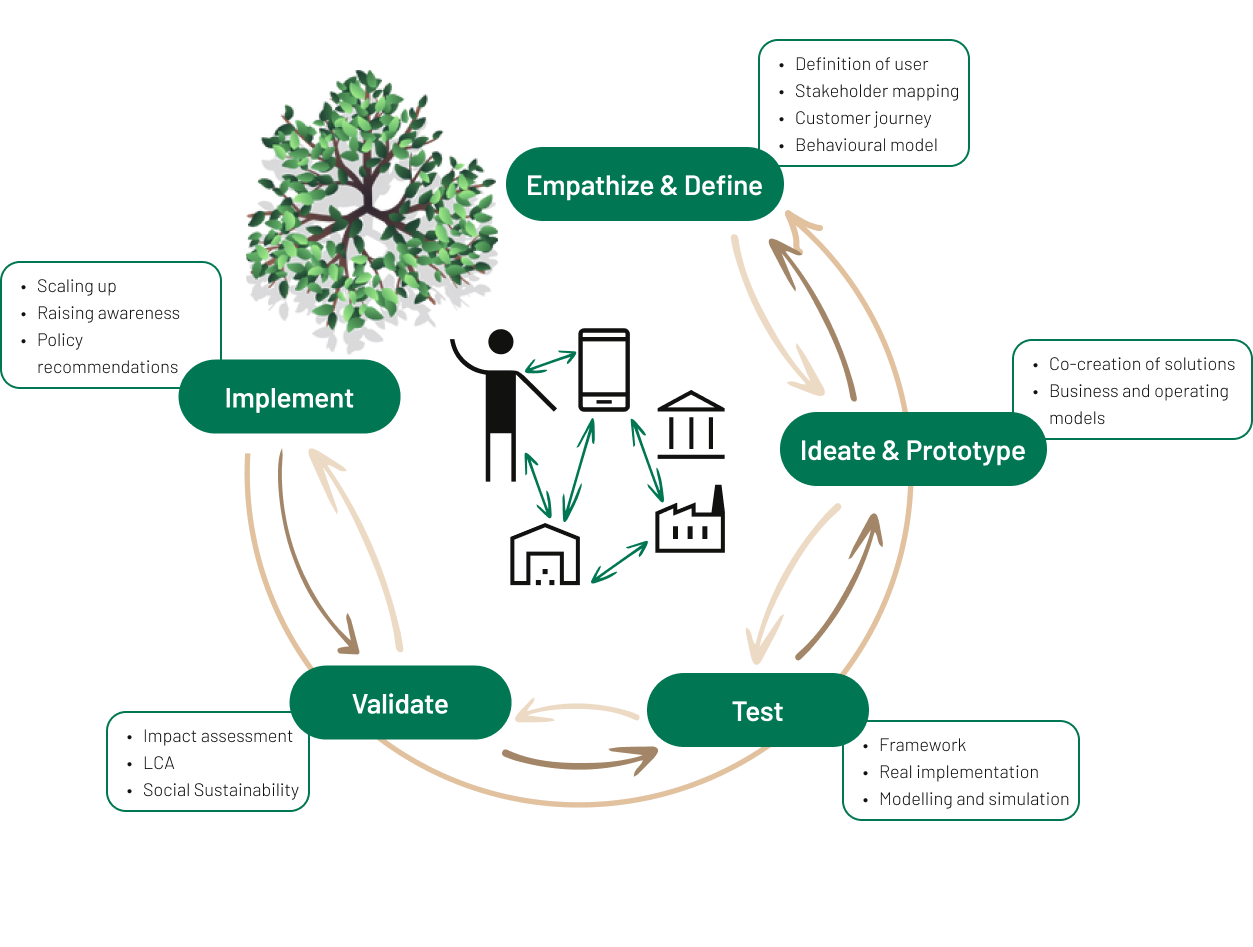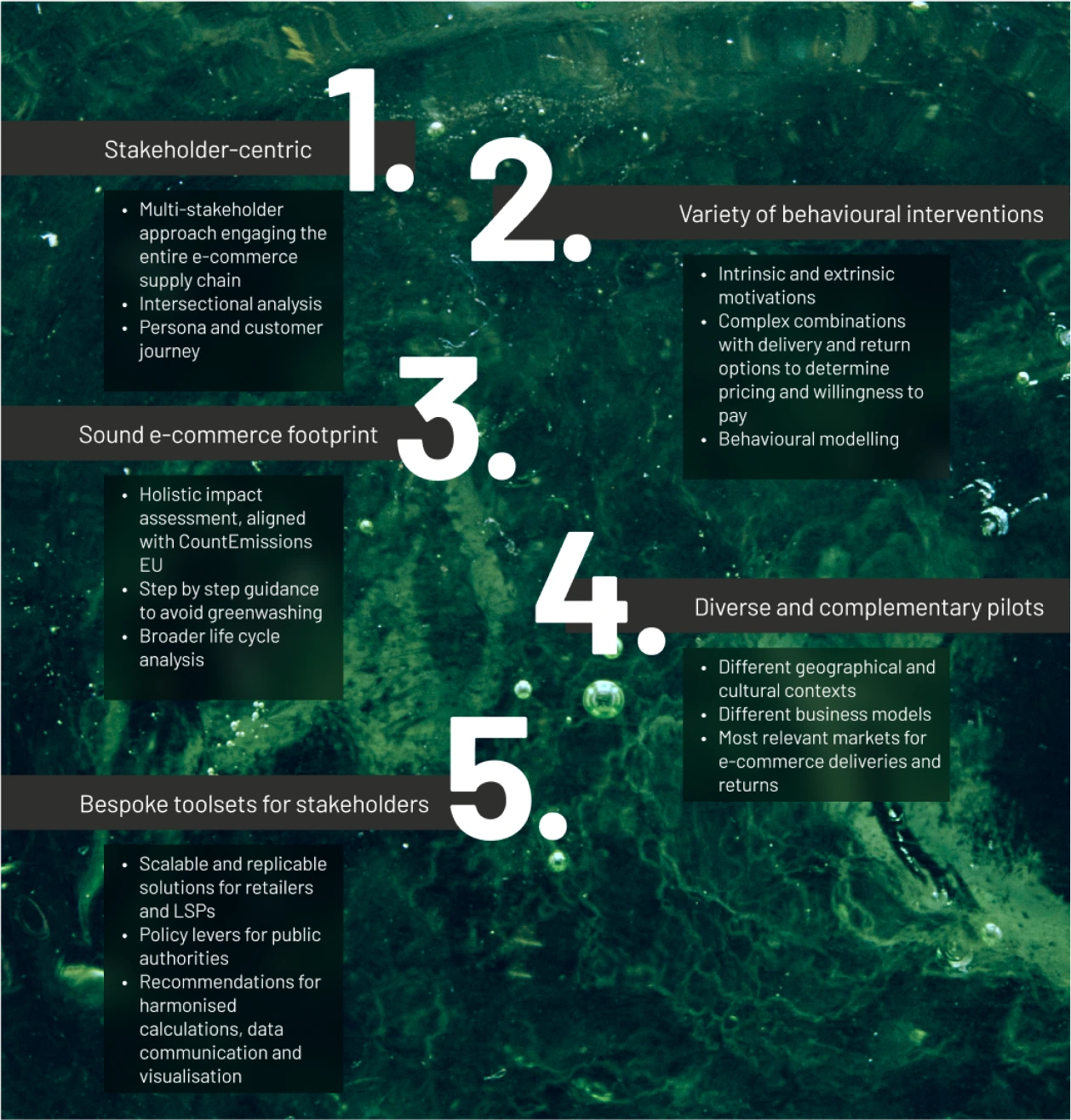Learn more
GreenTurn aims to co-create zero-emission logistics solutions, provide sound and transparent information on e-commerce footprints, and enable more sustainable delivery and return choices.
The project brings together a diverse range of e-commerce stakeholders to co-create zero emission logistics solutions, provide sound and transparent in formation on e-commerce footprints, and enable more sustainable delivery and return choices. GreenTurn solutions combine various behavioural interventions with delivery and return options, using design thinking approaches to develop stakeholder-centric solutions and secure widespread support for delivery and return strategies which can minimise e-commerce related emissions and traffic congestion.
Zero-emission e-commerce and freight delivery and return choices by retailers, consumers and local authorities
Check updates

Check updates

The GreenTurn consortium has identified 7 specific objectives (SO) to address the call topic:
SO1. Consolidate knowledge on attractive zero-emission delivery and return options, and successful behavioural interventions leading to greener choices
SO2. Co-develop solutions with diverse stakeholders, combining behaviour interventions and delivery and return options, testing them through pilots that cover the most relevant e-commerce markets and sales channels, as well as different geographies and cultures
SO3. Develop a concrete, step-by-step way to account for the footprint of e-commerce deliveries and returns, in line with CountEmissions EU
SO4. Develop replicable and scalable processes for retailers and LSPs, supporting them to provide consumers with accurate information regarding environmental footprints
SO5. Develop guidelines for data visualisation which can incentivise smaller e-commerce footprints for deliveries and returns
SO6. Develop a sound methodology to evaluate the successful communication, implementation, and adoption of zero-emission delivery and return options
SO7. Work with consumers, retailers, logistics service providers and public authorities to develop behavioural interventions that lead to more sustainable e-commerce practices

Aiming to address these issues, GreenTurn’s stakeholder-centred problem-solving methodology embeds the different design thinking steps into the project implementation:



Fashion
eco-route

Logistics market: Fashion/clothing
Stakeholders involved: LSP, retailer (brand), consumers, local authority
SustainSwap

Logistics market: Re-commerce (second hand clothing, sportswear, accessories, homeware, books, games, and toys)
Stakeholders involved: LSP, retailer, consumers
ElectroSmart

Logistics market: Wholesale/retailers electronics
Stakeholders involved: Wholesale/retailers, LSPs
LogPOINT

Logistics market: Food and beverages, cosmetics & pharmaceuticals, home furnishings
Stakeholders involved: Marketplace provider, retailers, LSPs, consumers
Green Button

Logistics market: Fresh produce, fashion/clothing, local services
Stakeholders involved: Local authority, retailers, LSPs, consumer
Check updates
> 30M
> 82 %
Marketplace: 3 (1)
Retailer: 7 (1)
Local authorities: 5 (2)
